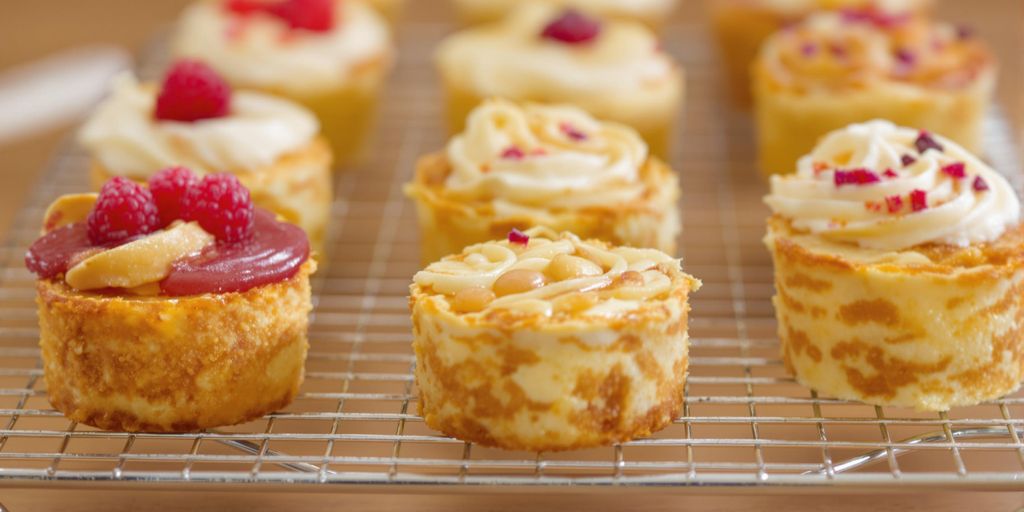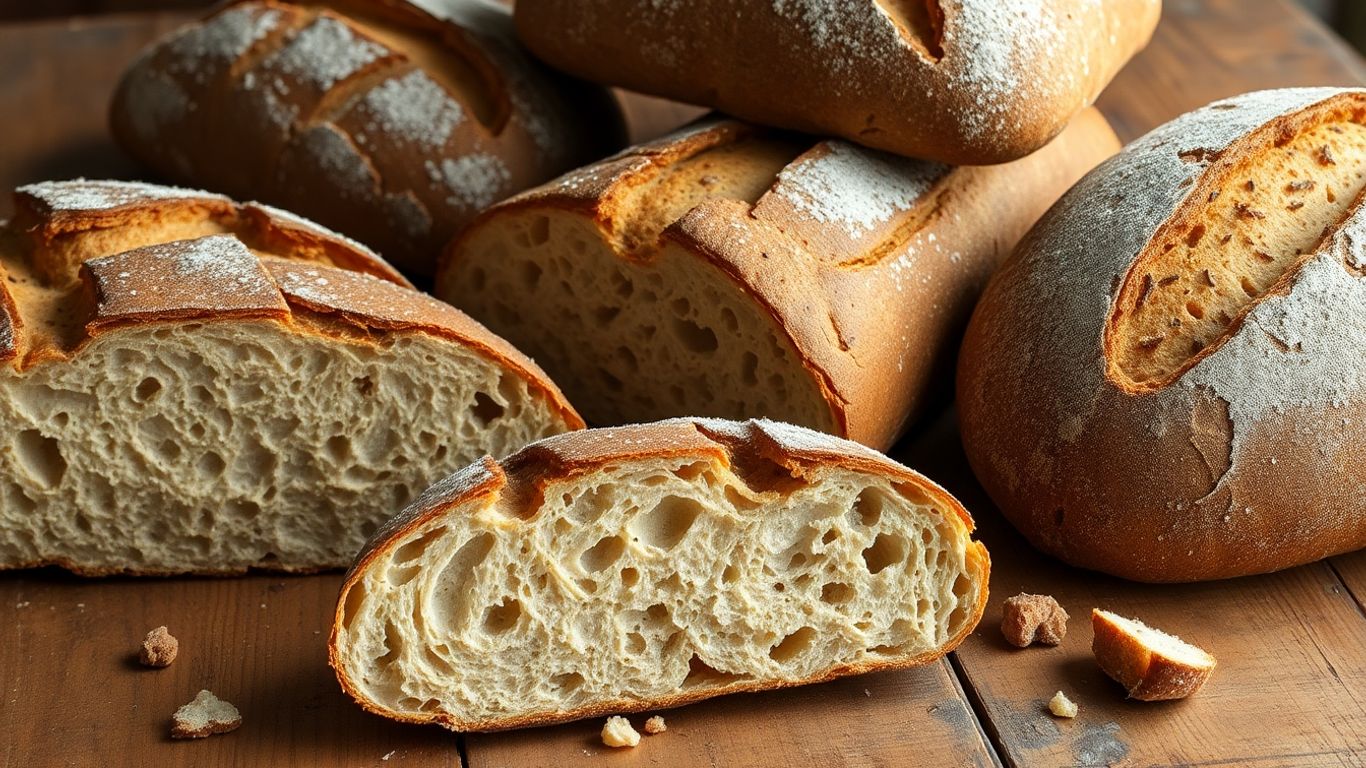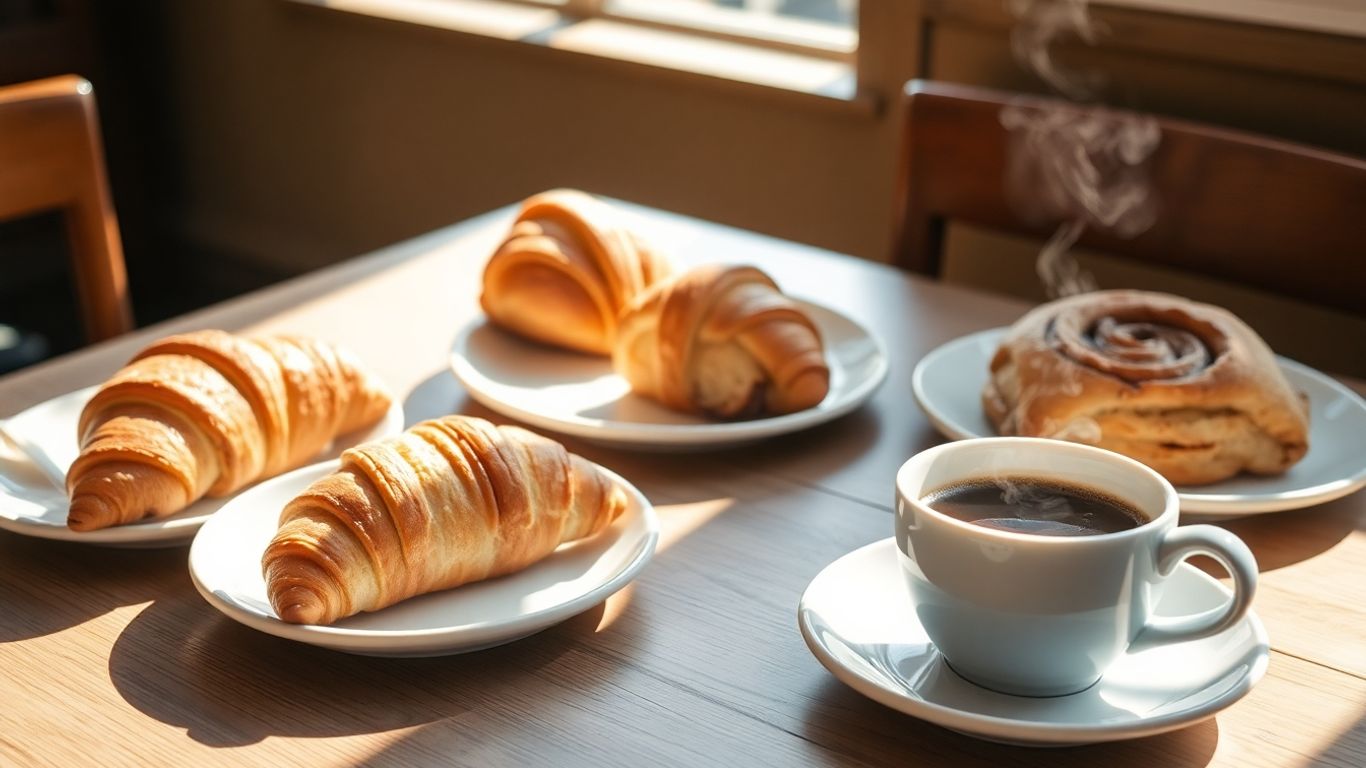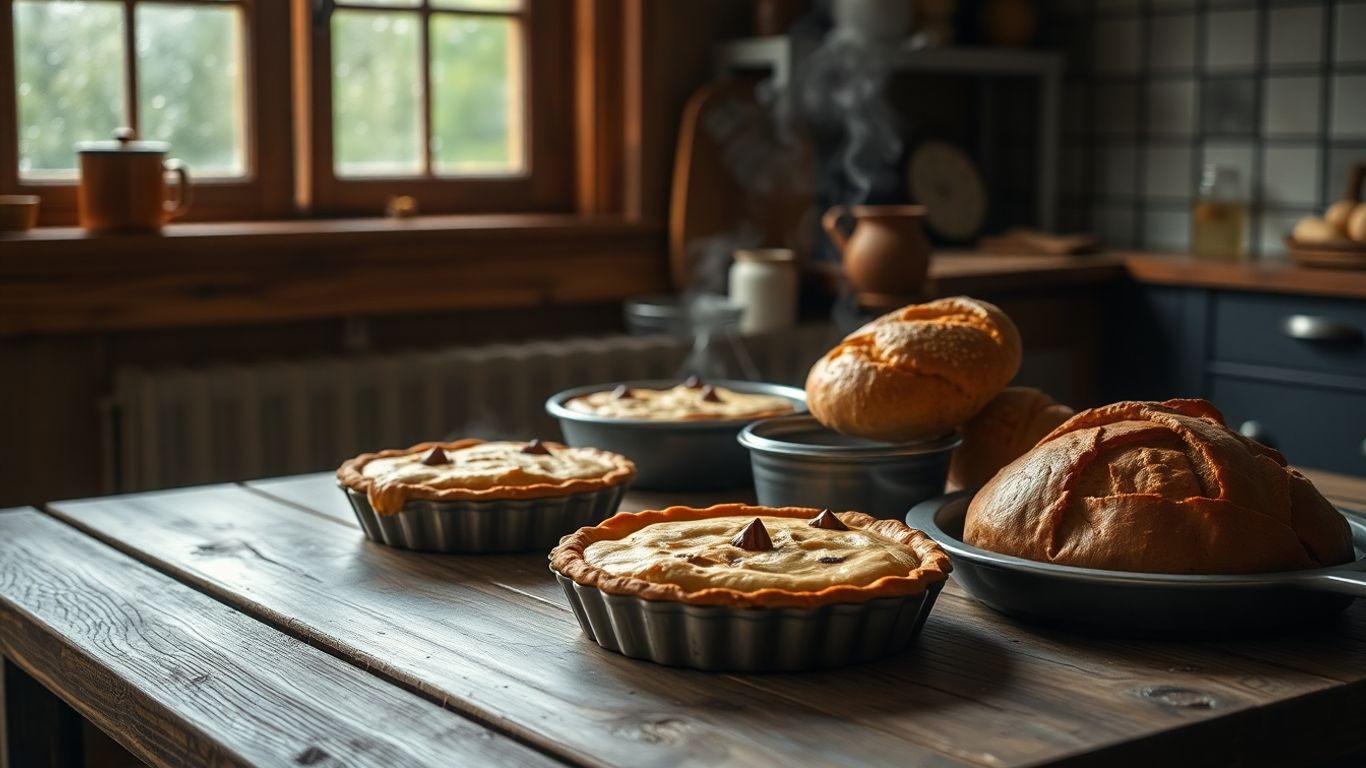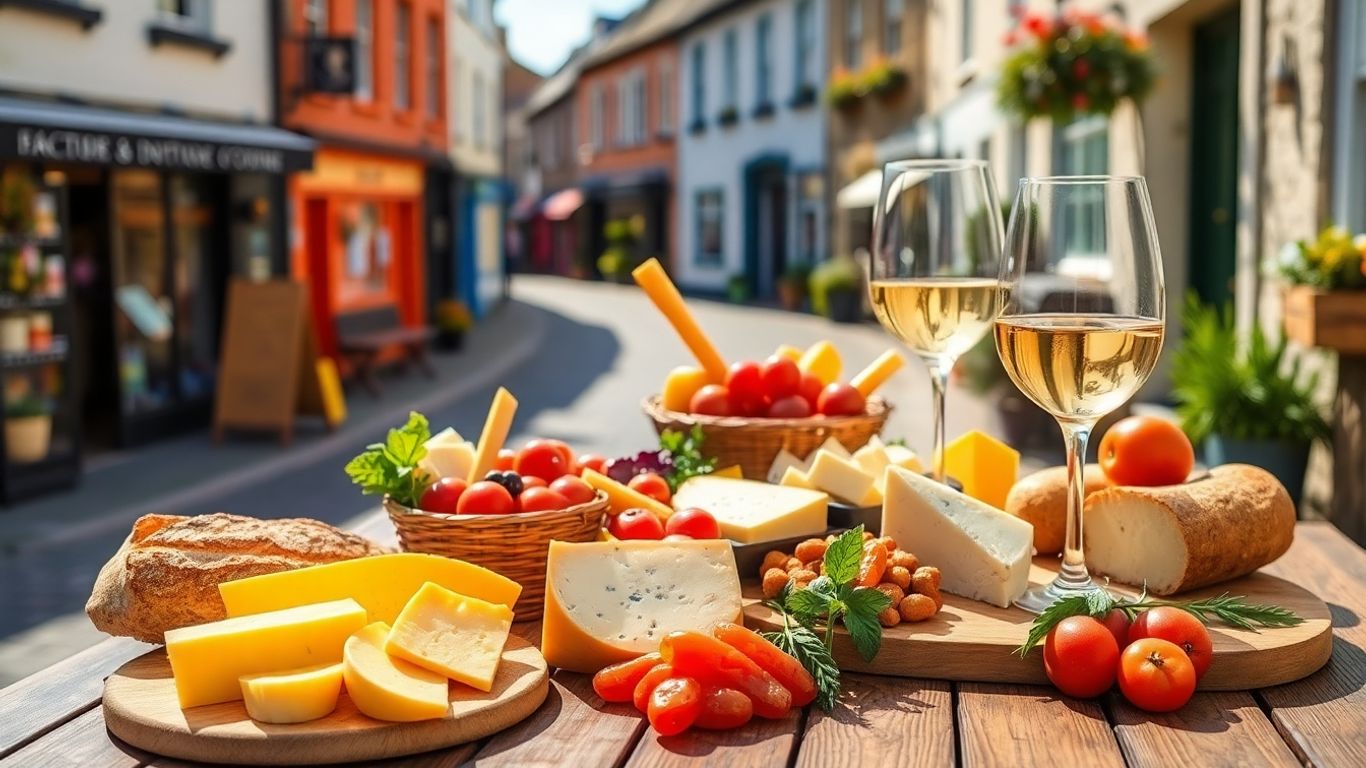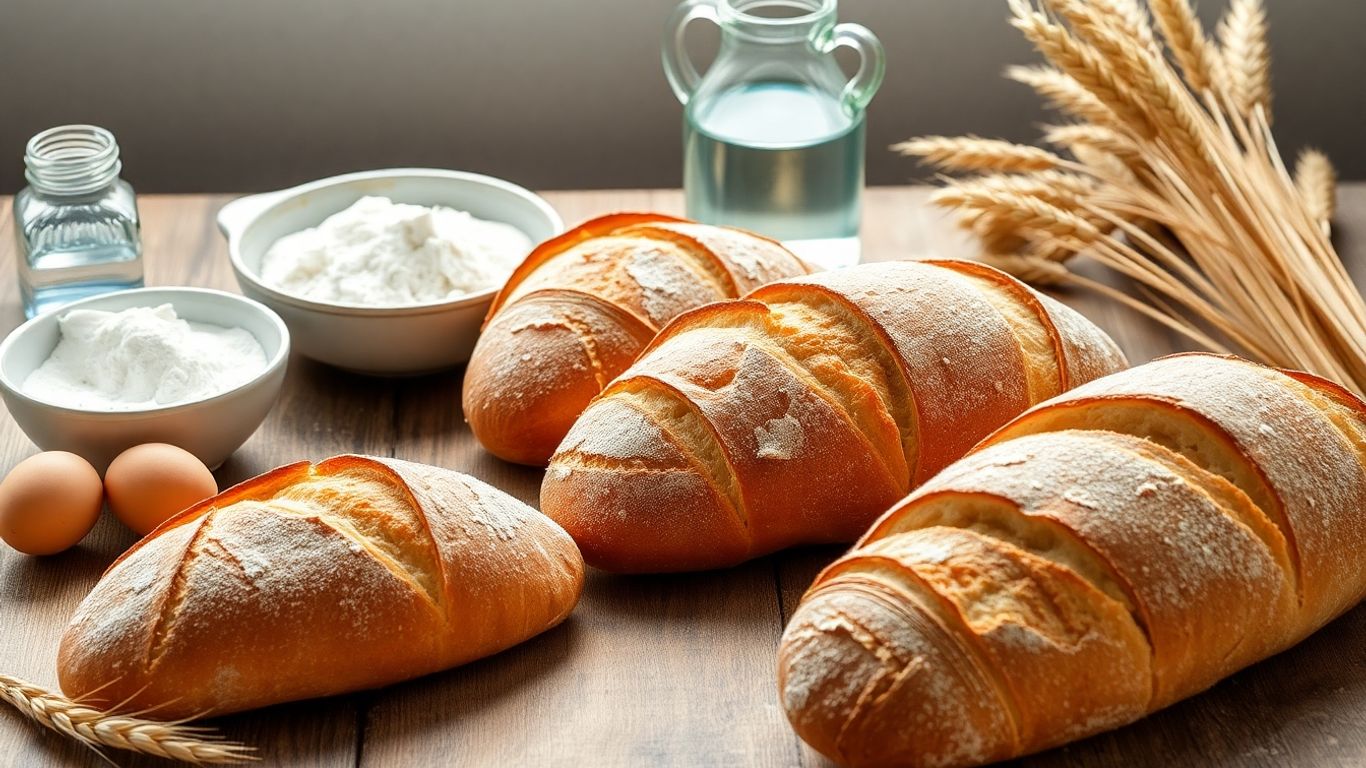We all love a freshly baked treat, don’t we? But sometimes, a huge batch of cookies or a giant cake is just too much. That’s where small-batch baking comes in. It’s all about making just enough, so you get that lovely homemade goodness without loads of leftovers or feeling like you’ve got to eat it all yourself. We’re going to chat about why making smaller amounts is actually brilliant and how we can do it well. It’s about quality over quantity, every time.
Key Takeaways
- Small-batch baking means we can make fresh treats for just a few people, like for a quiet evening or after-school snacks.
- When we’re making smaller recipes, it’s super important to use a digital kitchen scale and metric measurements to get things spot on.
- Picking the right size baking tins is a big deal for small-batch stuff; we don’t want batter spilling everywhere or things baking weirdly.
- We need to keep a close eye on baking times because smaller items cook quicker and can dry out fast.
- The best bits of small-batch baking are less food waste, quicker tidying up, and getting to enjoy something really special just for us, or a few pals.
The Essence of Small-Batch Baking
Crafting for Intimate Gatherings
We reckon there’s something special about baking on a smaller scale. It’s not just about reducing the recipe; it’s about creating something personal and intimate. Think about it: a perfectly sized cake for a romantic dinner, or just enough cookies to satisfy a craving without tempting you for days. Small-batch baking allows us to focus on quality and presentation, making each treat feel extra special. It’s about mindful creation, not mass production.
The Joy of Baking Without Excess
Let’s be honest, sometimes a full-sized cake is just too much. We end up with leftovers that go stale, or we feel pressured to eat more than we really want. Small-batch baking eliminates this problem. It’s about enjoying the process and the reward without the guilt or the waste. Plus, it’s a fantastic way to experiment with new recipes without committing to a huge quantity. We can try that artisan bakery recipe without worrying about having loads of it if it doesn’t turn out quite right.
Tailoring Treats for Every Occasion
Small-batch baking gives us the freedom to customise our treats to suit any occasion. Need a gluten-free dessert for a friend? Want to try a new flavour combination without risking a whole batch? Small-batch baking is the answer. It’s about being flexible and creative, and making sure that everyone gets to enjoy something delicious, tailored just for them. It’s also great for portion control, which is always a bonus!
Small-batch baking is about more than just reducing recipes; it’s about embracing a more mindful and personalised approach to baking. It’s about creating moments of joy and connection, one delicious bite at a time.
Mastering Recipe Scaling for Small-Batch Baking

Scaling recipes can feel a bit like maths class, but trust us, it’s a skill that’ll seriously up your baking game. Whether you’re catering for a cosy night in or just trying to avoid mountains of leftovers, knowing how to adjust recipes is key. Let’s get into the nitty-gritty.
Understanding the Limits of Reduction
When it comes to scaling down, there are limits. You can usually halve a recipe without too much trouble, and sometimes even reduce it by two-thirds. However, attempting to quarter a recipe is where things often go wrong. The leavening agents (like baking powder or yeast) just don’t work as effectively in such small quantities. You might end up with a flat, dense disaster. It’s often better to search for a recipe specifically designed for a smaller yield if you’re going that small. Think of it like this:
- Halving: Generally safe.
- Two-thirds reduction: Usually works.
- Quartering: Risky business.
Scaling recipes isn’t just about dividing ingredients; it’s about understanding how those ingredients interact. Leavening agents, for example, need a certain volume of other ingredients to work properly. Too little, and your bake won’t rise. Too much, and you’ll get a weird, bubbly texture.
The Importance of Familiar Recipes
We always recommend scaling recipes you’ve already made successfully. If you know how the original bake should look, smell, and taste, you’ll be much better equipped to spot any issues when you scale it down. It’s like having a benchmark. If something goes wrong, you’ll be able to pinpoint the error more easily. Plus, you’ll have a better feel for how the batter or dough should behave. If you’re trying a brand-new recipe and scaling it at the same time, you’re essentially introducing two potential points of failure. For example, if you’ve made our seasonal treats before, you’ll know what to expect.
Baking in Batches Versus Scaling Down
Here’s a thought: Do you really need to scale down? Sometimes, the easiest solution is simply to bake in batches. Instead of halving a recipe, make the full amount and bake half of it. Then, bake the other half later. This is especially useful for things like cookies or muffins, where the batter can often be stored in the fridge for a day or two. It might take a bit more time overall, but it avoids the potential pitfalls of scaling. Plus, you get the joy of fresh-baked goods twice! Consider these points:
- Batch baking maintains ingredient ratios.
- It allows for flexibility in timing.
- It can be less stressful than scaling.
Scaling recipes is a useful skill, but it’s not always the only solution. Sometimes, sticking to the original recipe and baking in batches is the way to go. It all depends on the recipe, your time constraints, and your confidence in your scaling abilities. Just remember to have fun and don’t be afraid to experiment! After all, even baking fails can be a learning experience. And who knows, you might even stumble upon a happy accident along the way. Just make sure you have a digital kitchen scale handy!
Essential Tools for Precision Small-Batch Baking

We all know that baking is a science, and when we’re scaling down recipes for smaller portions, accuracy becomes even more important. Forget those vague ‘cup’ measurements; we’re aiming for precision here. Let’s look at the tools that will help us achieve baking perfection, even in small doses.
The Indispensable Digital Kitchen Scale
Honestly, if you don’t have a digital kitchen scale, now is the time to get one. It’s a game-changer. Forget faffing about with measuring cups and spoons – a scale gives you consistent, accurate measurements every single time. This is especially important when you’re working with smaller quantities, where even a slight discrepancy can throw off the whole recipe. We find it also reduces the amount of washing up, which is always a bonus! A kitchen scale will make you more confident in your baking.
Metric Measurements for Accuracy
While some recipes still cling to imperial measurements, we’re big fans of using the metric system. Grammes and millilitres are simply more precise than cups and ounces. Metric measurements allow for finer adjustments, which is vital when scaling recipes down. Plus, many digital scales can switch between units, so you’re not stuck converting everything manually. Trust us, embrace the metric system, and your baking will thank you for it.
Selecting the Right Bakeware Sizes
Using the right bakeware is just as important as accurate measurements. A giant loaf tin isn’t going to work for a small-batch loaf cake, is it? We need to think about matching the size of our bakeware to the amount of batter we’re making.
Here’s a few things to consider:
- Smaller tins: Invest in a few smaller cake tins, muffin tins, and loaf tins. These will ensure your small-batch bakes cook evenly and look their best.
- Oven space: Make sure your bakeware fits comfortably in your oven, with enough space around each item for proper air circulation.
- Multiples: If you’re making individual portions, consider using ramekins or small dishes. These are perfect for desserts like artisan bakery crumbles or baked custards.
Getting the right tools for small-batch baking might seem like an investment, but it’s one that will pay off in the long run. With accurate measurements and the right equipment, you’ll be able to create delicious, perfectly portioned treats every time. Plus, you’ll avoid the frustration of failed bakes and wasted ingredients. It’s a win-win!
Navigating Bakeware for Small-Batch Success
When we’re scaling down recipes, it’s not just about the ingredients; it’s also about choosing the right bakeware. Using the wrong size tin can lead to under-baked middles or burnt edges – a small batch baker’s nightmare!
Avoiding Oven Overspill
We’ve all been there – that moment of panic when you see batter bubbling over the edge of the tin in the oven. This is usually because the tin is too small for the amount of batter you’ve made. It’s especially important when scaling up a recipe, but it can happen when scaling down too if we’re not careful. Always leave some headroom in your tin to allow for rising. A good rule of thumb is to fill your tin no more than two-thirds full.
Matching Pan Size to Batter Volume
Getting the right fit is key. A small batch of brownies in a large baking tray will result in a sad, thin layer. Conversely, too much batter in a small tin leads to the dreaded overspill. Wilton has a helpful guide for figuring out how many cups of batter can fit into a specific-sized pan. We find it useful to keep a few different sizes of tins on hand, so we can always find the perfect match. Here’s a quick guide:
- Muffin Tins: Great for individual portions, but make sure you have enough for your scaled-down recipe.
- Small Loaf Tins: Ideal for mini loaves of bread or cakes.
- Ramekins: Perfect for individual desserts like crumbles or baked custards.
It’s worth investing in a few good quality small tins. They’ll last for years and make all the difference to your small-batch baking.
Considering Oven Space for Multiple Batches
Even with small batches, oven space can become a premium, especially if we’re baking multiple things at once. Think about how much room your tins will take up and whether you’ll need to bake in stages. If you’re using more than one shelf, remember to rotate the tins halfway through baking to ensure even cooking. Also, small batch = comparatively tiny products and therefore over-done on the edges and slightly sunk in the middle–likely your pan is too high for the batter. Act accordingly.
Optimising Baking Times for Small Batches
We all know that baking is a science, and when we’re scaling down recipes for smaller batches, it’s not just about adjusting the ingredient quantities. Baking times also need a bit of our attention. Let’s explore how to get it right.
Adjusting for Thinner Baked Goods
When we use larger pans for smaller quantities, the batter spreads out more, resulting in thinner baked goods. This means they’ll bake faster than usual. Keep a close eye on them and start checking for doneness a few minutes before the recipe suggests. It’s better to be safe than sorry and end up with something overbaked. For example, if you’re making a small batch of brownies in a larger tin, they’ll likely be ready sooner.
Monitoring for Edge Over-Baking
One common issue with small batches is that the edges can over-bake while the centre is still gooey. This happens because the edges are more exposed to the heat. To combat this, we can try a few things:
- Use an oven thermometer to ensure our oven temperature is accurate.
- Rotate the baking tin halfway through baking to promote even cooking.
- If the edges are browning too quickly, we can loosely tent the tin with foil.
It’s worth keeping a baking log, especially when experimenting with small batches. Note down the baking time, temperature, and any adjustments we make. This will help us fine-tune our recipes and achieve consistent results.
Recognising the Impact of Smaller Products
Smaller cakes, cookies, or muffins will naturally bake faster than their full-sized counterparts. It’s all about surface area and heat penetration. Smaller products heat through much quicker. Here’s a rough guide:
| Product | Standard Baking Time | Small Batch Baking Time (Approx.) |
|---|---|---|
| Muffins | 20-25 minutes | 15-20 minutes |
| Cookies | 10-12 minutes | 8-10 minutes |
| Small Cake Layers | 30-35 minutes | 25-30 minutes |
Remember, these are just guidelines. The best way to determine doneness is to use our senses – look for a golden-brown colour, a firm texture, and a clean toothpick test. And if our oven consistently needs a few minutes more or less than the recipe suggests, make a note of it!
The Benefits of Small-Batch Baking
Reduced Waste and Freshness
Let’s be honest, how many times have we baked a huge batch of something only to end up throwing half of it away? With small-batch baking, that’s a worry of the past! We can enjoy freshly baked goods without the guilt of food waste. Freshness is key, and smaller quantities mean everything gets eaten while it’s still at its best. It’s a win-win!
Quicker Preparation and Clean-Up
We all lead busy lives, and sometimes the thought of a full-scale baking operation is just too much. Small-batch baking is fantastic because it’s so much quicker. Less prep time, shorter baking times, and a significantly reduced amount of washing up. What’s not to love? Think about it:
- Less time spent measuring ingredients.
- Faster mixing and kneading.
- Smaller equipment, easier to clean.
Personalised Indulgence
Small-batch baking allows us to get really creative and tailor our treats to our exact preferences. Fancy a chocolate chip cookie with sea salt and a hint of orange zest? Go for it! Want to try a new flavour combination without committing to a whole cake? Now’s your chance. It’s all about that personalised touch.
Small-batch baking lets us experiment without the pressure of perfection. If a recipe doesn’t quite work out, we haven’t wasted a load of ingredients. It’s all part of the fun, and it encourages us to try new things and develop our baking skills.
Creative Applications of Small-Batch Baking
Romantic Dinners and Desserts for Two
Imagine this: a quiet evening, just the two of you. Instead of ordering in or making a huge dessert that will tempt you for days, why not whip up a small-batch chocolate lava cake? Or perhaps a couple of perfectly portioned cheesecakes? Small-batch baking lets us create something special without the leftovers. It’s about savouring the moment and enjoying a treat made with love, without the excess.
Treats for Children After School
Kids love coming home to a freshly baked treat. But who has time to bake a huge batch of cookies every day? Small-batch baking is the answer! We can quickly make a handful of cookies or brownies – just enough to satisfy their cravings without overloading them with sugar. Plus, it’s a fun activity to do together. Here are some ideas:
- Mini muffins
- A few chocolate chip cookies
- Individual fruit crumbles
Individual Servings for Special Moments
Sometimes, we just want a little something for ourselves. Maybe it’s a stressful day at work, or perhaps we’re just craving something sweet. Small-batch baking allows us to create individual servings of our favourite treats. Think single-serving mug cakes, mini pies, or even just a couple of perfectly frosted cupcakes. It’s about personal indulgence without the guilt or waste.
Small-batch baking is about more than just reducing recipes; it’s about creating moments. It’s about making life a little sweeter, one small batch at a time. It’s about the joy of baking without the pressure of perfection or the burden of leftovers.
Small-batch baking lets you get really creative with your treats. You can try out new recipes and flavours without making too much. It’s perfect for baking just what you need, when you need it. Want to learn more about how we do things? Pop over to our website and see what we’re baking up today!
Conclusion
So, there we have it. Small-batch baking, for us, is really about getting back to basics. It’s not just about making less; it’s about making what we do bake count. We’ve found it means less waste, which is always a good thing, and honestly, the quality of what we make just feels better. Plus, it’s way less stressful than trying to churn out massive amounts of stuff. We can actually enjoy the process, and the results are always spot on. Give it a go, you might just find it changes how you bake too!
Frequently Asked Questions
What exactly is small-batch baking?
Small-batch baking is all about making smaller amounts of yummy treats. Instead of baking a huge cake, we might make just enough for two or a few muffins for breakfast. It means we get fresh goodies without loads of leftovers or waste.
What special tools do we need for small-batch baking?
We often use a digital kitchen scale for super-accurate measurements. It’s much better than cups and spoons because even tiny changes in ingredients can make a big difference when we’re baking small amounts. Also, having the right size baking tins is key!
Can we just make any recipe smaller?
Yes, we can! But we need to be careful. It’s usually fine to cut a recipe in half or even by two-thirds. Trying to make it super tiny, like a quarter of the original, can sometimes mess with how the baking powder or soda works, so the result might not be as good.
Does baking time change for smaller batches?
When we make less, the baking time usually gets shorter. We need to keep a close eye on our treats and check them sooner than the recipe says. They might also cook faster around the edges, so we watch out for that too.
What are some good times to do small-batch baking?
Absolutely! Small-batch baking is brilliant for so many things. We can bake a special dessert for a romantic dinner, make a few biscuits for the kids after school, or even bake just one or two portions of a favourite pudding for ourselves. It’s all about making just what we need.
What are the main benefits of small-batch baking?
The best part is less waste and always having fresh bakes! It’s also quicker to get everything ready and clean up afterwards. Plus, we can try out lots of different recipes without being swamped with too much food. It’s really about enjoying baking without the fuss.

